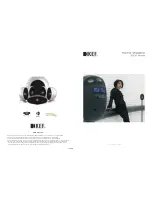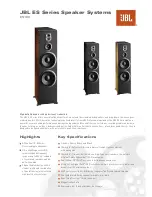
Installation Manual
#10, FIGURES 15A; 15B; 16A; 16B; 17A;
17B) and connect a second hose to the lower
charge faucet (COMPONENT #11, FIGURES
15A; 15B; 16A; 16B; 17A; 17B). Place the
other end of the second hose in the empty
bucket.
Slowly open the lower charge faucet
(COMPONENT #11, FIGURES 15A; 15B;
16A; 16B; 17A; 17B) to depressurize the collec-
tor loop. Run the charge pump and immediately
open the upper charge faucet (COMPONENT
#9, FIGURES 15A; 15B; 16A; 16B; 17A; 17B).
Run the charge pressure pump until the glycol
mixture begins flowing into the empty bucket.
Once you see this, quickly switch the hose from
the empty/return bucket to the bucket contain-
ing the glycol mixture. Continue to circulate
the fluid through the collector loop and bucket
using the pressure pump until the bubbling has
stopped and the air has been purged.
NOTE: The level of HTF in the bucket may
reduce and if so additional HTF must be added
to protect the pump from cavitation.
4.13.5
STEP 5
- pressurize the collector loop to
required pressure.
After charging the collector loop, shut the lower
charge valve and let the pressure pump drive
up the loop pressure to the appropriate level
(Generally in the range of 30 – 40 PSIG). To
more accurately calculate the minimum pres-
sure required in the loop, measure the height of
the solar collector above the solar storage tank,
divide this number by 2.31, then add 20 PSIG to
this number. As a word of caution, the pressure
in the propylene glycol loop should not exceed
the setting of the PR valve when the system is
operational on a good sunny day. Contact your
solar contractor if the charged collector loop
pressure exceeds this threshold.
Your SolaRay AC solar water heating system
must be charged and the fluid quality main-
tained by an experienced contractor. If the sys-
tem is drained during the winter, or you notice
a significant drop in collector loop pressure,
contact your installation contractor immediately
for service. The propylene glycol HTF provides
the freeze protection for your system and must
be properly maintained. An experienced con-
tractor should periodically check the HTF fluid
quality.
5) SYSTEM START-UP PROCEDURES
Throughout the installation procedures outlined
in Section 4 above, emphasis has been placed
on the correct method for plumbing and wiring
the components, checking for plumbing leaks,
pressurizing the collector loop and eliminating
any trapped air that can impact fluid quality and
pump performance. Having completed these
tasks it is time to start up your SolaRay AC
solar water heating system.
When the solar loop has been fully charged and
the pressure is 35 to 40 psig (check the pressure
gauge, (COMPONENT #7, FIGURES 15A;
15B; 16A; 16B; 17A; 17B ), set the differen-
tial controller to the “Automatic” setting. This
will activate your circulating pump when the
temperature differential between collector and
tank is sufficient to provide useful heat. The
P.22
Table 5
Total Collector Loop Fluid Capacity In Gallons*
1 Collector System
4 Gallon
2 Collector System
5 Gallons
Table 4
Percent (volume) Dow Frost HD Concentration Required
Temperature F
For Freeze Protection For Burst Protection
20
18%
12%
10
29
20
0
36
24
-10
42
28
-20
46
30
-30
50
33
-40
54
35
-50
57
35
-60
60
35
















































